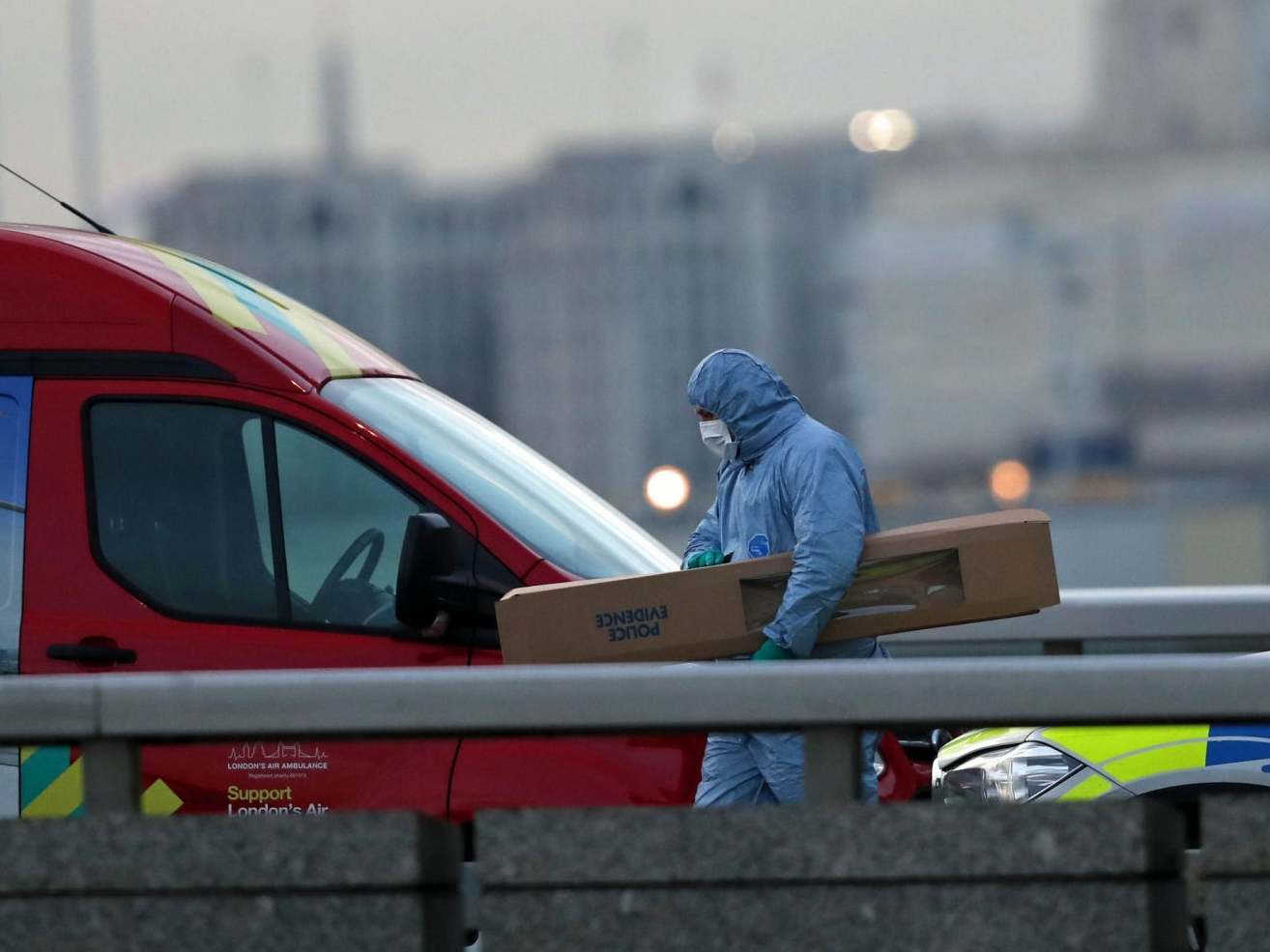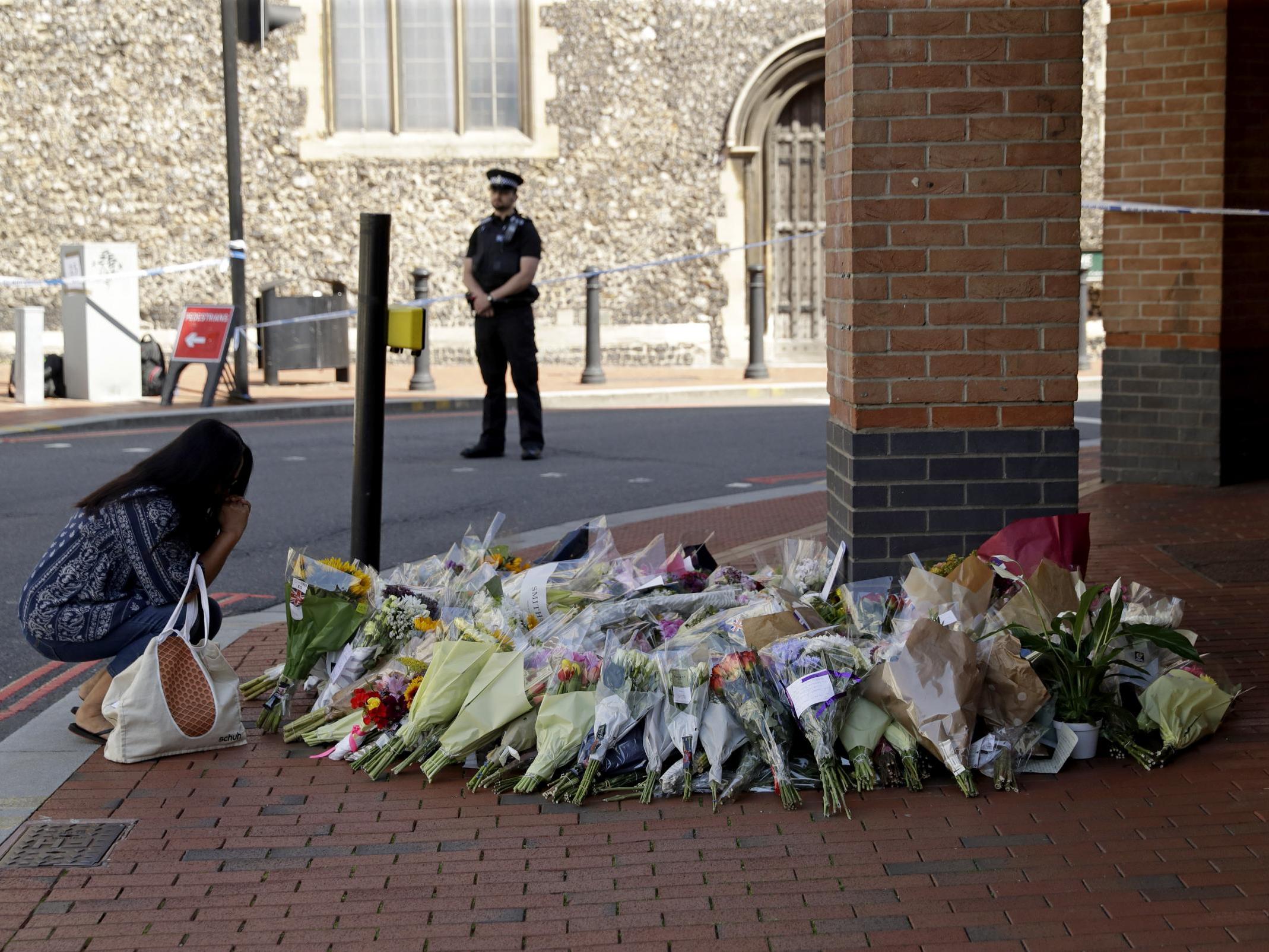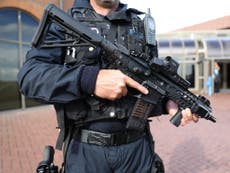Why has the UK’s terror threat level been lowered?
Analysis: Four terror attacks followed the last decision to lower the threat level to 'substantial', Lizzie Dearden writes

News that the UK’s terror threat level has been lowered will be reassuring news to many.
Although, as the government and security services are keen to stress, a “substantial” threat means attacks are still likely, they are deemed less likely than at almost any other point since Isis declared its caliphate and started calling for indiscriminate attacks in 2014.
Priti Patel, the home secretary, said the Joint Terrorism Analysis Centre (JTAC) took the decision because of the “significant reduction in the momentum of attacks in Europe since those seen between September and November 2020”.
But the events of the past year have cast doubt on how accurate such assessments can be.
The terror threat level was last downgraded to substantial on 4 November 2019, when the head of UK counterterror policing hailed “positive developments in reducing the threat from terrorism”.
Less than a month later, jihadist Usman Khan stabbed two people to death at a rehabilitation event in London.
His attack was the first of four terrorist incidents to take place during the last period of “substantial” terror threat.
The next was at HMP Whitemoor in January 2020, when two inmates tried to kill a prison officer in the first Isis-inspired attack inside a British jail.
Sentencing the perpetrators in October, a judge said it was “no accident” that they attacked weeks after Khan, who was himself a recent prisoner at HMP Whitemoor.
In both incidents, the perpetrators used knives and wore fake suicide vests, and the same techniques were used in a third attack in February 2020.
Isis supporter Sudesh Amman started stabbing passers-by in Streatham, but did not manage to fatally injure his victims before being shot dead by the undercover police who had been following him.
Then on 20 June, Khairi Saadallah stabbed three men to death as they sat with friends in a Reading park.

Isis claimed responsibility for the attacks at Fishmongers’ Hall and Streatham, while the perpetrators of the HMP Whitemoor and Reading attacks had viewed the group’s propaganda.
But despite the wave of similar knife attacks, the national terror threat level was not increased until 3 November.
According to public announcements by the government and security services, it was raised back to “severe” - meaning attacks are highly likely - because of jihadist attacks in France and Germany.
Neil Basu, the head of UK counterterrorism policing said, those attacks struck on the eve of national lockdowns, and there had been fears that extremists would take their “last opportunity before the streets were cleared” with incoming restrictions in England.
Fortunately, they did not. But there are questions why such weight can be placed on the tempo of attacks in mainland Europe, when there is no indication that the terrorists who struck Britain over the past year were influenced by recent attacks on the continent.
The terrible attacks suffered by Paris and Brussels in 2015 and 2016 were feared to be a precursor to similar marauding terrorist rampages in Britain, but although bloodshed did arrive in 2017, the form of attacks and perpetrators who emerged were very different.

Security services have repeatedly been put on the back foot. As Mr Basu previously admitted, before the 2017 attacks in Westminster, Manchester and London Bridge, security services believed that Isis fighters returning from abroad presented the biggest threat.
“It wasn’t – the threat was already here,” Mr Basu said the following year. The deadliest terror attacks since 2017 have been launched by people who were already known to security services, and even some who were under active investigation by MI5.
The intense, and understandable, focus on Isis had also consumed security services’ attention at a time of unprecedented growth in the threat from the far right.
MI5 did not take primacy for right-wing terrorism until April 2020, long after the assassination of Jo Cox, Finsbury Park attack and Stanwell stabbings.
For now, the coronavirus lockdown is assessed to have reduced opportunities for mass casualty attacks by clearing normally crowded places and symbolic locations of potential victims.
Terrorists have shown themselves to be adept at shifting tactics, having already moved from complex and networked bomb plots like 7/7 to low-technology knife and vehicle attacks that are faster to plan and harder to intercept.
It must be hoped that security services are not caught off-guard by further developments as the “new normal” takes hold after the pandemic.



Join our commenting forum
Join thought-provoking conversations, follow other Independent readers and see their replies
Comments